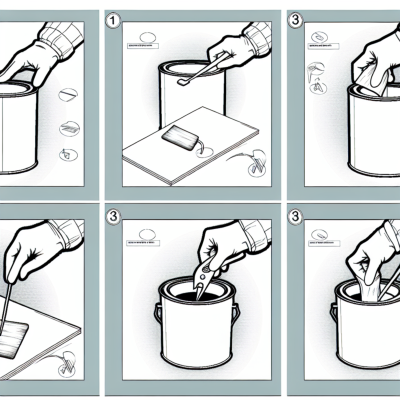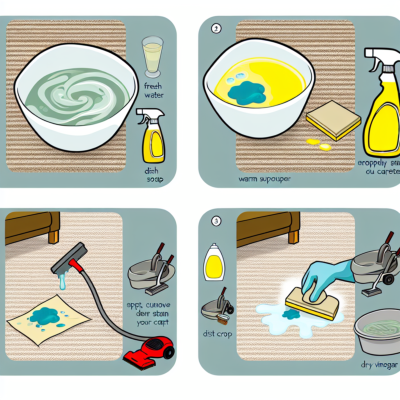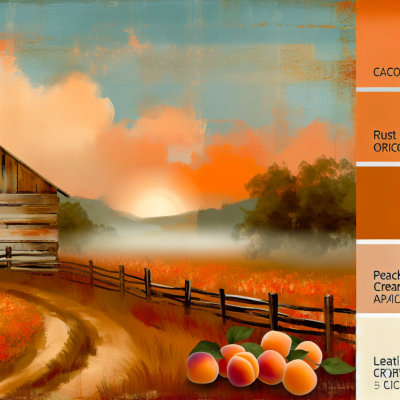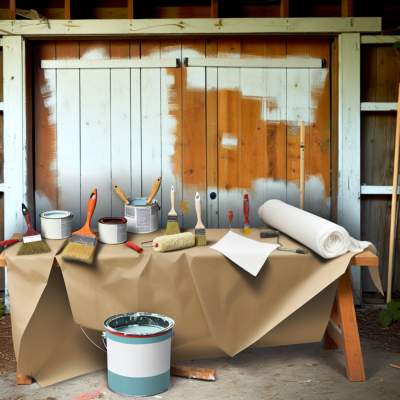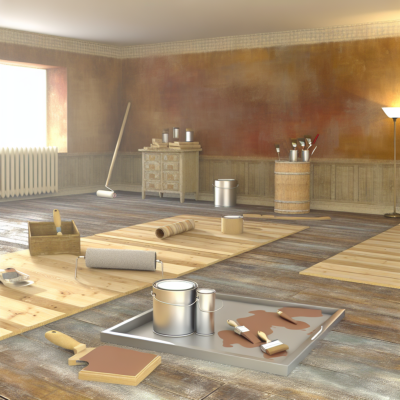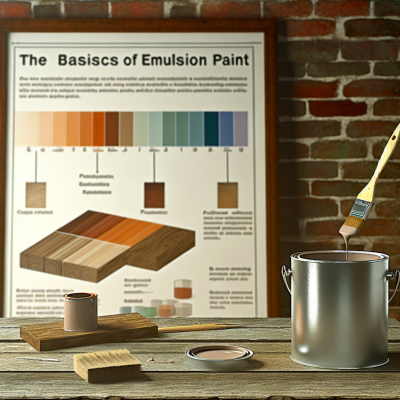Delving into the heart of home improvement, this room-by-room exploration cascades the tremendous triumphs of anti mould paint and its bright veneer of durably mould-eradicated opulence. The tour we embark on effortlessly navigates the specialized architectonic realm of mould paint and mould resistant paint . Admire the latest, applauded off-the-shelf mediocrity turn-ground-breaking phenomena, boasting practical gilds like ronseal anti mould paint and anti mould bathroom paint . Dabbling in a technological jamboree, we marvel at the required grade of proficiency, such as the most effective paint for mould or the best anti mould paint . Reluctant dwellers amid brushstrokes of wonder, we peruse still, enlightening ourselves to the time-defying properties of zinsser anti mould paint , the masonry of mould proof paint , and finally, a listener's chorus of the adroit notion of anti mould paint additive .
Mould can be a persistent and unsightly problem in many homes. Not only does it affect the aesthetics of your living space, but it can also have adverse effects on your health. Fortunately, there is a solution – anti-mould paints. These specially formulated paints are designed to prevent mould growth and inhibit the spread of spores, ensuring a cleaner and healthier environment for you and your family.
Anti-mould paints contain additives that actively fight against mould and mildew. These additives work by creating a protective barrier on the painted surface, making it difficult for mould to grow. Additionally, some anti-mould paints have fungicidal properties, meaning they actively kill any mould spores that come into contact with the painted surface. This dual-action approach makes anti-mould paints highly effective in preventing and combating mould growth.
When choosing an anti-mould paint, it is important to consider the level of protection you need. Some paints are designed for high-moisture areas, such as bathrooms and kitchens, where mould growth is more common. These paints typically have a higher concentration of mould-fighting additives and offer long-lasting protection. On the other hand, there are also general-purpose anti-mould paints that can be used in any room of the house.
Application of anti-mould paint is similar to regular paint. However, it is important to follow the manufacturer's instructions for best results. Before painting, ensure that the surface is clean and free from any existing mould or mildew. It is recommended to use a mould cleaner or bleach solution to thoroughly remove any traces of mould. Once the surface is clean and dry, apply the anti-mould paint using a brush or roller. Allow the paint to dry completely before applying a second coat, if necessary.
In conclusion, anti-mould paints are a valuable tool in the fight against mould and mildew. By choosing the right paint and following proper application techniques, you can effectively prevent and control mould growth in your home. Say goodbye to unsightly mould stains and hello to a cleaner, healthier living environment with anti-mould paints.
Understanding Anti-Mould and Mould Resistant Paints

Mould is a common problem in many homes, especially in areas with high humidity or poor ventilation. It can not only be unsightly but also pose health risks to the occupants. To combat this issue, anti-mould and mould resistant paints have been developed.
Anti-mould paints contain special additives that help to prevent the growth of mould and mildew on painted surfaces. These additives work by creating a hostile environment for mould, making it difficult for spores to germinate and grow. They also provide a protective barrier that inhibits the growth of mould and prevents it from spreading.
Mould resistant paints, on the other hand, are formulated with ingredients that are naturally resistant to mould. These paints contain biocides that are toxic to mould and prevent its growth. They also have excellent moisture resistance properties, which helps to prevent the accumulation of moisture that can lead to mould growth.
Both anti-mould and mould resistant paints are available in a variety of finishes, including matt, silk, and gloss. They can be used on walls, ceilings, and other surfaces prone to mould growth, such as bathrooms, kitchens, and basements.
When choosing an anti-mould or mould resistant paint, it is important to consider the level of humidity in the area where it will be applied. High humidity areas may require a more durable and moisture-resistant paint to effectively prevent mould growth. It is also important to properly prepare the surface before applying the paint to ensure maximum effectiveness.
Regular maintenance is also crucial to ensure the long-term effectiveness of anti-mould and mould resistant paints. It is recommended to clean the painted surfaces regularly with a mild detergent to remove any dirt or grime that can provide a breeding ground for mould.
In conclusion, anti-mould and mould resistant paints are effective solutions for preventing mould growth in homes. By understanding the differences between these paints and choosing the right one for your specific needs, you can effectively combat mould and protect your home and health.
How does mould resistant paint work?
Mould resistant paint is specially formulated to prevent the growth of mould and mildew on surfaces. It contains additives, such as fungicides and biocides, that inhibit the growth of mould spores.
When mould spores come into contact with the surface painted with mould resistant paint, the fungicides and biocides in the paint prevent the spores from growing into mould colonies. These additives disrupt the cellular structure of the mould spores, preventing them from reproducing and spreading.
In addition to the fungicides and biocides, mould resistant paint often contains other ingredients that help to create a protective barrier against moisture. These ingredients can include water-repellent agents, which prevent water from penetrating the surface, and breathable additives, which allow moisture to escape from the surface.
By creating a moisture-resistant barrier, mould resistant paint helps to prevent the conditions that promote mould growth. It keeps surfaces dry and inhospitable to mould spores, reducing the likelihood of mould and mildew formation.
It is important to note that mould resistant paint is not a permanent solution and may need to be reapplied periodically, especially in areas with high humidity or moisture, or where there has been previous mould growth. Regular cleaning and maintenance are also essential to prevent mould growth, as mould resistant paint alone cannot eliminate existing mould.
Overall, mould resistant paint offers an effective and convenient solution for preventing mould growth on surfaces. By using paint specifically designed to inhibit mould and mildew, homeowners can protect their walls, ceilings, and other surfaces from the damaging effects of mould.
What's the difference between anti mould and anti condensation paint?
When it comes to protecting your walls from moisture-related issues, two popular options are anti mould paint and anti condensation paint. While both types of paint aim to combat dampness, they target different underlying problems. Understanding the difference between them can help you choose the right paint for your specific needs.
Anti mould paint: This type of paint is specifically designed to prevent the growth of mould and mildew on your walls. It contains added fungicides that inhibit the growth of mould spores, making it an effective solution for areas prone to dampness and condensation. Anti mould paint is usually recommended for bathrooms, kitchens, and other high-moisture areas where mould growth is common.
Anti condensation paint: Unlike anti mould paint, anti condensation paint tackles the issue of condensation. Condensation occurs when warm, moist air comes into contact with a cold surface, causing water droplets to form. This can lead to dampness and mould growth if not addressed. Anti condensation paint contains special additives that help to reduce condensation by insulating the surface and preventing the formation of water droplets.
While anti mould paint primarily focuses on preventing mould growth, anti condensation paint aims to minimize condensation and the related problems it can cause. It's important to note that anti condensation paint may not have the same level of mould-inhibiting properties as anti mould paint, so it may not be suitable for areas with high mould risk.
In conclusion, anti mould paint is designed to prevent mould growth, while anti condensation paint aims to minimize condensation. Depending on your specific needs, you may choose one or the other, or even a combination of both, to effectively protect your walls from moisture-related issues.
How to Choose the Best Anti-Mould Paint for Your Needs

When it comes to choosing the best anti-mould paint for your needs, there are several factors to consider. Here are some important things to keep in mind:
1. Mould resistance: Look for a paint that is specifically designed to resist mould growth. It should have ingredients that inhibit the growth of mould and mildew, such as fungicides or biocides. Check the product label or description to ensure that it offers long-lasting mould protection.
2. Breathability: Opt for a paint that allows moisture to escape from the surface. This is important because trapped moisture can lead to mould growth. Look for paints that are breathable and allow water vapour to pass through, while still providing a protective barrier against mould.
3. Coverage and durability: Consider the coverage and durability of the paint. Look for a product that offers good coverage and can withstand the conditions of your space. It should be able to resist moisture, humidity, and frequent cleaning without losing its effectiveness.
4. Application: Check the application process and requirements of the paint. Some anti-mould paints may require multiple coats or specific preparation, such as priming or cleaning the surface beforehand. Make sure you choose a paint that is suitable for your skill level and the surface you plan to paint.
5. Colour and finish: Consider the colour and finish options available. While the primary goal is to prevent mould growth, you also want the paint to enhance the aesthetic appeal of your space. Choose a colour and finish that complements your décor and personal preferences.
6. Safety: Ensure that the anti-mould paint you choose is safe for use in your specific environment. Check for any safety precautions or warnings mentioned by the manufacturer. If you have any specific concerns, consult a professional or seek advice from the paint supplier.
By considering these factors, you can choose the best anti-mould paint for your needs. Remember to follow the manufacturer's instructions for application and maintenance to ensure the best results and long-lasting mould protection.
Which paint is best for anti mould?
When it comes to choosing the best paint for anti mould protection, there are a few key factors to consider. The most important factor is the presence of an effective mould-resistant formula in the paint. Look for paints that specifically mention their anti mould properties on the label or product description.
Another important consideration is the type of paint finish. Semi-gloss or satin finishes are generally more resistant to mould growth than flat or matte finishes. This is because the smoother surface of glossier finishes makes it harder for mould to take hold and grow.
In addition to the paint itself, it is also crucial to properly prepare the surface before painting. Make sure to clean any existing mould or mildew from the surface and treat it with a mould-killing solution before applying the paint. This will help to prevent any remaining mould spores from growing and spreading.
Lastly, consider the environment in which the paint will be used. If you are painting a particularly damp or humid area, such as a bathroom or basement, it is recommended to choose a paint that is specifically formulated for high-moisture environments. These paints often contain additional mould inhibitors to provide extra protection against mould growth.
| Paint Type | Features |
|---|---|
| Anti-Mould Paint | Specifically formulated to resist mould growth |
| Semi-Gloss/Satin Finish | Smooth surface that is resistant to mould |
| High-Moisture Paint | Extra protection against mould in damp environments |
By considering these factors and choosing a paint that meets your specific needs, you can effectively protect your walls and surfaces from mould growth and maintain a clean and healthy environment.
Application Tips for Anti-Mould Paint in Bathrooms and Other Areas
When it comes to using anti-mould paint in bathrooms and other areas prone to moisture and humidity, proper application is key to ensure maximum effectiveness. Here are some tips to help you get the best results:
- Clean the surface: Before applying anti-mould paint, it is important to thoroughly clean the surface to remove any existing mould or mildew. Use a mild detergent and scrub the surface with a brush or sponge to ensure it is free from dirt and grime. Rinse the area with clean water and allow it to dry completely before proceeding.
- Prepare the paint: Follow the instructions provided by the manufacturer to prepare the anti-mould paint. This may involve stirring the paint or adding a specific amount of water or primer. Make sure to mix the paint well to ensure proper coverage and effectiveness.
- Apply the paint: Use a brush or roller to apply the anti-mould paint evenly onto the surface. Start from the top and work your way down, ensuring that all areas are covered. Apply multiple coats if necessary, allowing each coat to dry completely before applying the next one.
- Pay attention to corners and edges: Mould and mildew tend to accumulate in corners and along edges. Take extra care to apply the anti-mould paint in these areas, ensuring thorough coverage and protection.
- Allow proper ventilation: After applying the anti-mould paint, it is important to allow proper ventilation in the room. This will help the paint dry faster and prevent the growth of mould and mildew. Open windows or use fans to improve air circulation.
- Maintain regular cleaning: While anti-mould paint provides a protective barrier against mould and mildew, regular cleaning is still necessary to prevent build-up. Use a mildew-resistant cleaner and regularly wipe down the surfaces to keep them clean and free from mould.
- Monitor for signs of mould: Despite using anti-mould paint, it is important to monitor the treated areas for any signs of mould growth. If you notice any discolouration, musty odours, or dampness, take immediate action to address the issue and prevent further growth.
By following these application tips, you can ensure that your anti-mould paint effectively protects your bathroom and other areas from mould and mildew. Remember to choose a high-quality anti-mould paint and always refer to the manufacturer's instructions for best results.
Where do you use anti mould paint?
Anti mould paint can be used in various areas of your home to prevent and combat mould growth. Here are some common places where you can use anti mould paint:
| Bathrooms | One of the most common areas for mould growth is the bathroom. The damp and humid environment in bathrooms provides the perfect conditions for mould to thrive. Applying anti mould paint on the walls and ceiling can help prevent mould growth and keep your bathroom clean and healthy. |
| Kitchens | Kitchens are another area prone to mould growth due to the high levels of moisture and heat generated during cooking. Using anti mould paint on the walls and backsplash can help prevent mould from spreading and protect your kitchen surfaces. |
| Basements | Basements are often damp and poorly ventilated, making them a breeding ground for mould. Applying anti mould paint on the walls and floors can help prevent mould growth and improve the air quality in your basement. |
| Laundry Rooms | Laundry rooms are another area where moisture and humidity are common. Using anti mould paint on the walls and ceilings can help prevent mould growth and protect your clothes and appliances. |
| Garages | Garages can be prone to mould growth, especially if there are water leaks or poor ventilation. Applying anti mould paint on the walls and floors can help prevent mould from spreading and protect your belongings. |
Remember to properly prepare the surfaces before applying anti mould paint and follow the manufacturer's instructions for the best results. Additionally, regular cleaning and maintenance can also help prevent mould growth in these areas.
what is emulsion paint
How do you apply mold resistant paint?
Applying mold resistant paint is a straightforward process that can help prevent the growth of mold and mildew on your walls. Here are the steps to follow:
- Prepare the surface: Before applying the paint, make sure the surface is clean and free of any mold or mildew. Use a mixture of water and detergent to scrub away any visible mold, and allow the surface to dry completely.
- Protect yourself: Mold can be harmful to your health, so it's important to take precautions. Wear protective clothing, gloves, and a mask to avoid direct contact with the mold and paint fumes.
- Apply a primer: Using a mold resistant primer is recommended before applying the mold resistant paint. This will create a barrier between the surface and the paint, preventing any existing mold from growing through the new paint layer.
- Stir the paint: Thoroughly stir the mold resistant paint before application to ensure an even consistency. Follow the manufacturer's instructions for proper mixing.
- Start painting: Use a brush, roller, or sprayer to apply the mold resistant paint to the surface. Begin at the top and work your way down, making sure to cover the entire area evenly.
- Allow drying time: Give the paint enough time to dry completely before applying a second coat or exposing it to moisture. Follow the manufacturer's instructions for the recommended drying time.
- Clean up: Clean your tools and dispose of any leftover paint according to the manufacturer's guidelines. Properly sealing and storing the paint can extend its shelf life for future use.
By following these steps, you can effectively apply mold resistant paint and protect your walls from mold and mildew growth. Remember to always read and follow the manufacturer's instructions for the specific paint product you are using.
Preventative Measures and Maintenance Using Anti-Mould Products
While anti-mould paints can effectively prevent the growth of mould on your walls, it is important to take additional preventative measures and perform regular maintenance to ensure long-lasting protection. Here are some tips:
1. Proper ventilation: Ensure that your rooms are properly ventilated, especially in areas prone to moisture, such as bathrooms and kitchens. Use exhaust fans or open windows to allow air circulation and reduce humidity levels.
2. Fix leaks and plumbing issues: Any water leaks or plumbing issues should be promptly addressed and fixed. Moisture from leaks can lead to mould growth, so it is crucial to tackle these problems as soon as they arise.
3. Regular cleaning: Regularly clean your walls, especially in areas where moisture tends to accumulate. Use mildew-resistant cleaning products to remove any existing mould or mildew and prevent their recurrence.
4. Maintain proper humidity levels: Use dehumidifiers or air conditioners to control indoor humidity levels. Aim for a humidity level of around 40-50% to create an environment that is less conducive to mould growth.
5. Inspect and seal cracks: Inspect your walls for any cracks or gaps that could provide entry points for moisture. Seal these cracks using caulk or other appropriate sealants to prevent water infiltration.
6. Regularly check for signs of mould: Even with the use of anti-mould paints, it is important to regularly inspect your walls for any signs of mould growth. If you notice any mould spots or musty odours, take immediate action to address the issue.
7. Repaint when necessary: Over time, the effectiveness of anti-mould paints may diminish. If you notice signs of mould growth or if the paint starts to peel or chip, consider repainting the affected areas with a fresh coat of anti-mould paint.
By following these preventative measures and performing regular maintenance, you can ensure that your walls stay mould-free and protected for years to come.
How do you manage mould in the home?
Mould is a common problem in many homes and can be caused by a variety of factors, including excess moisture, poor ventilation, and high humidity levels. Fortunately, there are several ways to manage and prevent mould growth in your home:
1. Identify and fix the source of moisture: Mould thrives in damp conditions, so it's important to identify and fix any sources of moisture in your home. This may include repairing leaks, improving drainage, or installing a dehumidifier.
2. Improve ventilation: Good airflow is essential in preventing mould growth. Make sure your home is adequately ventilated by opening windows, using extractor fans in bathrooms and kitchens, and ensuring that air can circulate freely throughout your home.
3. Keep surfaces clean and dry: Regularly clean and dry surfaces in your home to prevent mould growth. This includes wiping down bathroom fixtures, drying wet clothes promptly, and regularly cleaning kitchen surfaces and appliances.
4. Use anti-mould products: Consider using anti-mould paints, sprays, or sealants in areas prone to mould growth. These products are designed to inhibit mould growth and can help to prevent mould from spreading.
5. Monitor humidity levels: Use a hygrometer to monitor the humidity levels in your home. Ideally, the humidity should be kept below 60% to prevent mould growth. If the humidity is consistently high, consider using a dehumidifier to help maintain optimal levels.
6. Remove existing mould: If you discover mould in your home, it's important to remove it promptly and safely. Wear protective clothing, such as gloves and a mask, and use a mould removal product or a mixture of bleach and water to clean affected areas. Be sure to dry the area thoroughly afterwards.
By following these steps, you can effectively manage mould in your home and create a healthier living environment for you and your family.
How effective is anti mould paint?
Anti mould paint is highly effective in preventing mould growth on surfaces. It contains special additives that inhibit the growth of mould and mildew, making it an ideal choice for damp areas such as bathrooms, basements, and kitchens.
When applied correctly, anti mould paint creates a protective barrier on the surface, preventing the growth of mould spores and bacteria. It also helps to reduce moisture absorption, which is a common cause of mould and mildew formation.
One of the key benefits of anti mould paint is its long-lasting effectiveness. Unlike regular paint, which may need frequent repainting to maintain its resistance to mould, anti mould paint can provide protection for several years.
It is important to note that anti mould paint is not a solution for existing mould problems. It is designed to prevent mould growth on clean surfaces, and should not be used as a substitute for proper mould remediation. If you already have mould issues, it is recommended to address them before applying anti mould paint.
It is also worth mentioning that the effectiveness of anti mould paint can vary depending on factors such as the quality of the paint, the surface it is applied to, and the level of humidity in the environment. Therefore, it is important to choose a reputable brand and follow the manufacturer's instructions for best results.
In conclusion, anti mould paint is a highly effective solution for preventing mould growth on surfaces. It creates a protective barrier and helps to reduce moisture absorption, providing long-lasting protection against mould and mildew. However, it is not a solution for existing mould problems and should be used in conjunction with proper mould remediation.
In essence, the journey to a mould-free, hale and hearty home, made compelling through the blinders of masterfully designed painting products, tightly wraps itself in an exploration of the vivid universe of anti mould paint . It's an almost illustrious march of heroic title-holders, of which the resplendence of ronseal anti mould paint and the genius behind the most vibrant of these vassals, zinsser anti mould paint , emerge more than mere enshrinements. Undoubtedly, the final reveille of the article stakes its claim, planting the lofty paean into the lives of a great base – those of us tirelessly treating mould in their hallowed mindscapes, in infinities of time and fief. Hence, it is that we, ardent lovers of warmth and safe havens, can continually purge the wayward geometry of these petite nano-demons. With new-lit purpose, we discover a past seer's partake, borrowing ardent truths from a conversation with an intimate heart. Coincidentally, we learn that the search for the so-called ' best anti mould paint ' is nought but a somber gleeman's note in the quest of ultimate guide to treating mould . Be it by number, brushstroke or design, the anti mould paint manuscripts ride forth, well into wisdom-charged grandeur. Their undimmed pursuit of a sulphate's calm behest wins close. Armored in our hexad, we retreat, leaving them wonders to unfold in a stretch of tactile glees and asters in fortuned holds.
Read more:
- How to paint aluminium
- open a can without a can opener
- mdf paint
- how to get slime out of clothes
- how to get rid of paint smell
- how to get water out of iphone
- pinata ideas
- how to get sunscreen out of fabric
- things to do in summer
- washing soda vs baking soda
- paint peeling in bathroom
- paint for upvc doors
- painting after removing wallpaper
- things to do as a couple
- sandpaper grades
- baking soda and vinegar cleaning
- how to hack key fob doors apartment
- how to paint a garage door
- can you paint laminate floors
- oil based paint for walls
- what is emulsion paint
- how to clean gloss paint brushes
- laundry detergent substitute
- how to antique a mirror
- how to get a bird out of your house
- how to remove rust from stainless steel
- how many fixer upper families still live in their homes
- apple tablet with pen
- how to clean white fabric shoe
- painting pine furniture
- how to test for lead paint
- top selling vintage items on etsy
- best places to live in texas
- The Magnificent Waco Castle
- how to balance a ceiling fan




